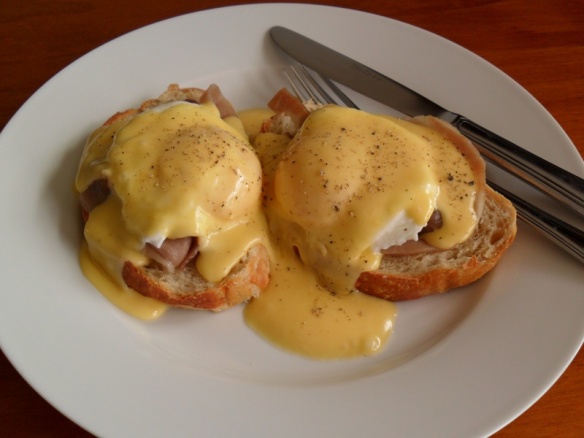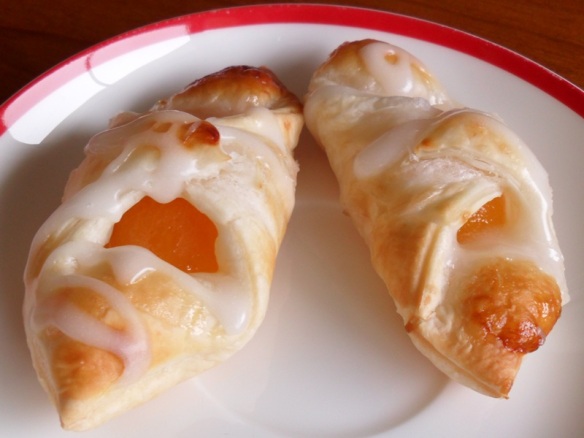Time saver: like eating soft fluffy delicious clouds.
I’ve posted a recipe for pancakes before, but since then I’ve learned a trick that bears repeating. For really soft fluffy pancakes you have to separate the eggs, beat the whites separately and then fold them into the mixture. The difference is worth the extra effort. The fact that I had to come to Portugal to learn how to make the ultimate American pancake is just one of those things.
Pancakes – serves 3-4 (makes around 9-10 pancakes)
- 1½ cups white flour
- 2 Tbsp white sugar
- 1 tsp baking powder
- ½ tsp salt
- 3-4 eggs
- 1 cup milk
- 2 Tbsp melted butter (around 30g)
- butter for frying
- maple syrup to serve
- Separate the eggs, putting the egg whites into a (stainless steel if you have it) bowl ready for beating.
- Using an electric beater, beat the egg whites into stiff peaks ((in Portuguese they say “claras em castelo” or “claras em neve”) and set aside.
- Sift the flour, salt and baking flour into a large bowl. Make a well in the centre, and into this pour the egg yolks, milk and butter.
- Stir to combine with a fork. Start in the centre and work your way out to the sides, mixing thoroughly to combine and remove any lumps. Don’t overmix the batter. Alternatively you could use the electric beaters again – but only if you do it quickly to avoid overmixing (which results in tough rubbery pancakes).
- Using a large metal spoon, fold the egg whites into the batter to combine. You want it well combined but don’t mix it so much that you lose the air in the whites. It’s okay to have little pockets of egg white.
- Heat a frying pan over medium-high heat. Melt a knob of butter in the frying pan and spread evenly over the frying pan’s surface.
- Pour a ladle-full of pancake mix (about ½ cup) into the centre of the frying pan (without tilting the pan). Cook on that side until bubbles begin to form on the surface, then flip and cook on the other side until browned (around 15-20 seconds).
- Serve with a generous dousing of maple syrup.







